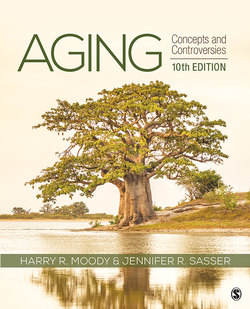Читать книгу Aging - Harry R. Moody - Страница 94
На сайте Литреса книга снята с продажи.
A New Syllogism
ОглавлениеUsing new knowledge of human aging and of chronic disease, we attempt here to provide a model that harmonizes these competing and chaotic themes, one that points toward new strategies of research and of health attainment. Our theoretical structure allows predictions to be made, and the predictions are strikingly different from those traditionally expected.
These curves are correct. They converge at the same maximum age, thereby demonstrating that the maximum age of survival has been fixed over this period of observation.
Figure 1 shows the actual data. Quite … startling conclusions follow from these data. The number of extremely old persons will not increase. The percentage of a typical life spent in dependency will decrease. The period of adult vigor will be prolonged. The need for intensive medical care will decrease. The cost of medical care will decrease, and the quality of life, in a near disease-free society, will be much improved.
Adult life may be conveniently divided into two periods, although the dividing line is indistinct. First, there is a period of independence and vigor. Second, for those not dying suddenly or prematurely, there is a period of dependence, diminished capacity, and often lingering disease. This period of infirmity is the problem; it is feared, by many, more than death itself. The new syllogism does not offer hope for the indefinite prolongation of life expectancy, but it does point to a prolongation of vitality and a decrease in the period of diminished capacity.
Description
Figure 1 Human Survival Curves for 1900, 1920, 1940, 1960, and 1980
Source: U.S. Bureau of Health Statistics.
There are two premises to the syllogism; if they are accepted, then it follows that there will be a reversal of the present trend toward increasing infirmity of our population and increased costs of support of dependency…. The first premise is almost certain; the second is very probable. If, after careful evaluation of the supporting data, one accepts the premises of this syllogism, then one must accept the conclusion and the implications of the conclusion.
